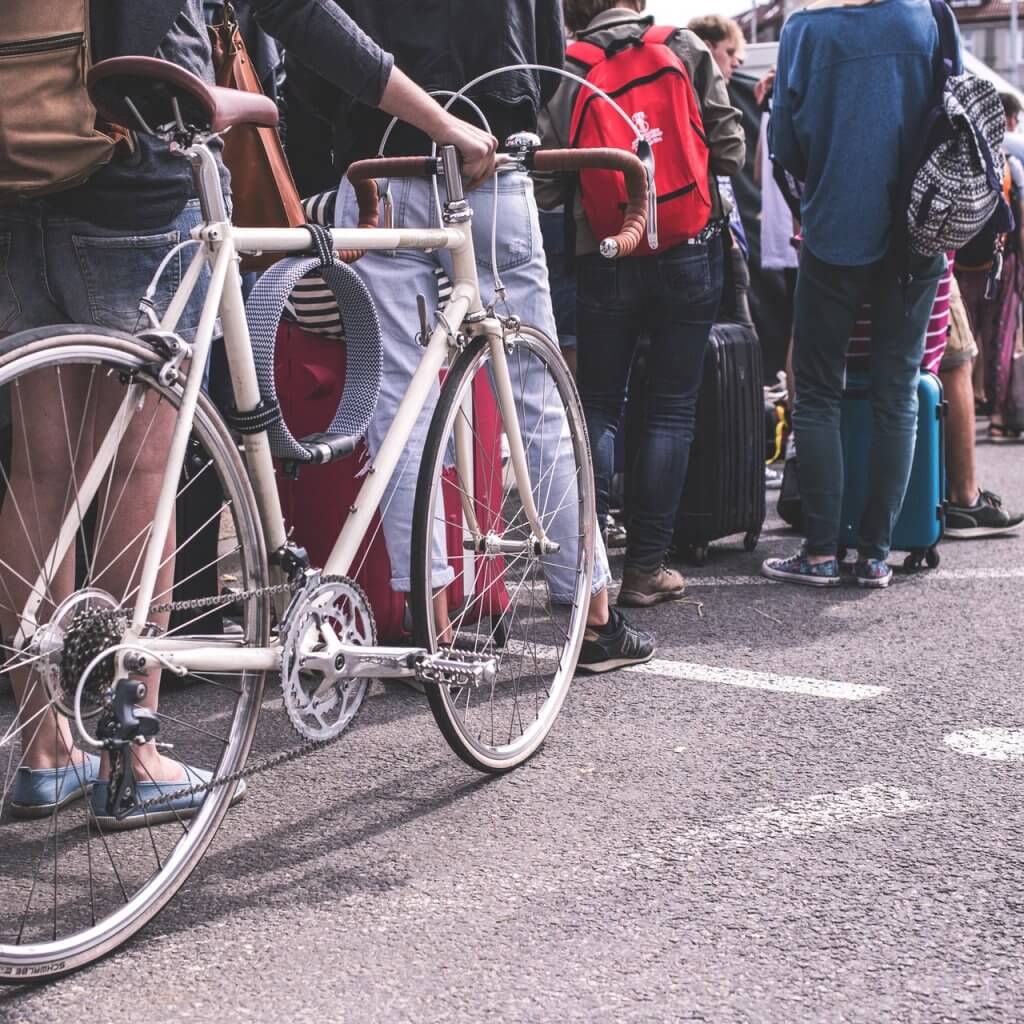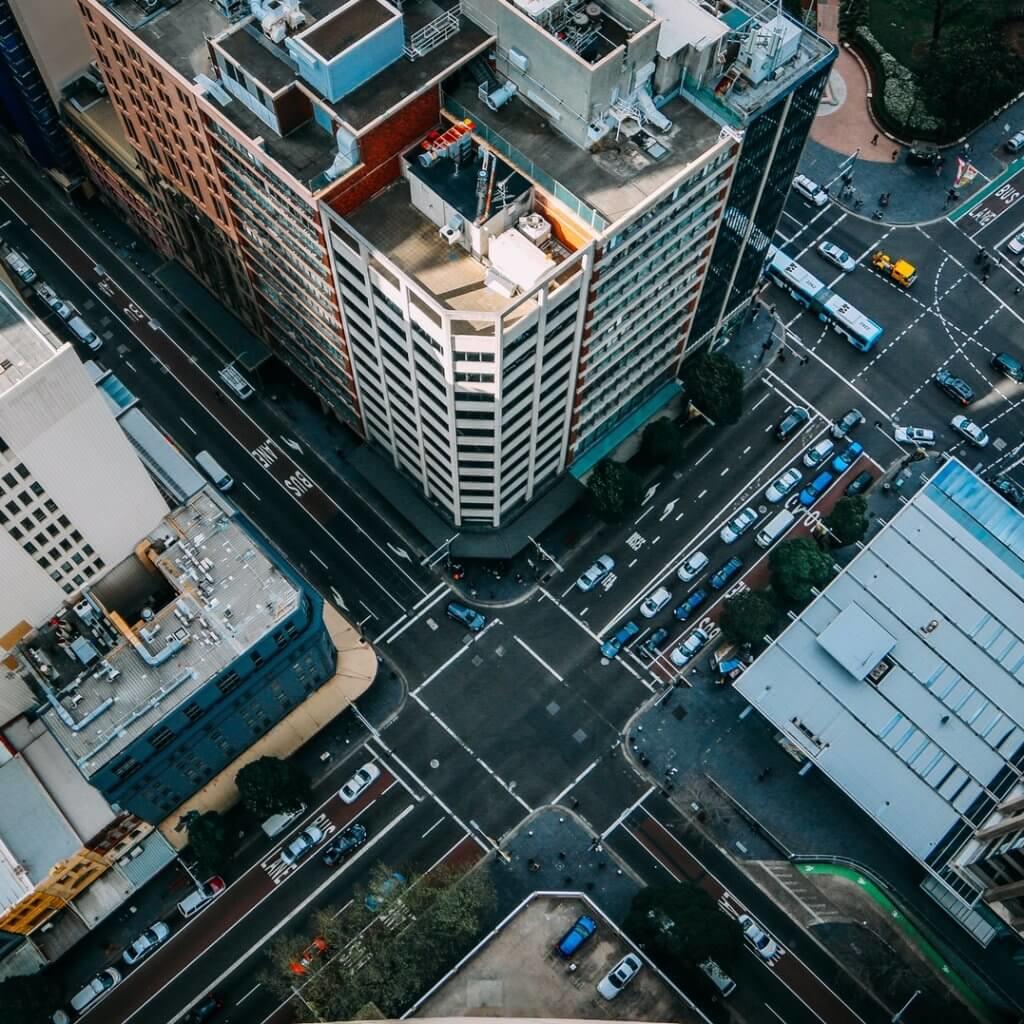Tips for Running in a City

I had been running for more than half of my life when I unceremoniously moved to Philadelphia from a small town called Birdsboro. It was a given that I would continue to run, despite suddenly finding myself in an environment I had virtually no knowledge of. Under the errant belief that all running is the same, wherever you may be, I fumbled to the rapid discovery that running in a city takes some adapting to, particularly after spending years loping through bucolic suburbs. If I could talk to myself five years ago, I would readily offer her the following free advice.
Eyes up
A great deal of rural running hinges upon awareness of your terrain. There is an omnipresent danger of roots and rapid shifts of level surfaces that can occur quickly and abruptly. It can be tricky to reprogram your posture and stance out of the general conditioning of looking at the ground ahead of you (even more complicated as urban sidewalks can be jagged and uneven), however, the greater hazards are at eye level. There are three major obstacles to be wary of:
Pedestrians The vast majority of the population has head phones on and will not necessarily hear you approaching them. It is essential to keep your gaze eye level as much as possible, to avoid running into people, who are either unaware of you or indifferent to your presence. While universal respect is a lovely notion, I have learned through active experience that cramped city sidewalks do not breed the greatest etiquette, so a runner must be prepared to dart and weave.

Bikers Many cities have a greater population that relies on bikes as their primary form of transportation than smaller towns and country areas do. In addition to parking always being at a premium, traffic gets messy and dense, and for that same reason, many bikers take to the sidewalks, although they are not supposed to. Be particularly cautious in rounding corners-absent x-ray vision, you will not be able to see a biker coming, and it is difficult for them to stop abruptly. Be particularly cognizant of any bikers who are texting while they ride. They are unpredictable and prone to swerving. When at all possible, cut a sidewalk rider a wide berth-cross the street if it’s an option.
Cars Cars are obviously a risk no matter where you run, but out of sheer consideration of population, urban areas are particularly volatile. In addition to there just being more cars to avoid, drivers are less patient, less considerate, more eager to squeeze through an intersection if the light has just turned red. One of the most important rules I have learned running in the city is that having the right of way does not guarantee your ability to exercise it. At all intersections, be very aware of the cars coming through. At stop signs, I often look specifically to be given the wave through from a driver, but if nothing else, make sure the car has come to a full stop-do not anticipate it.

Familiarize yourself with your area
There is a looseness that can often be afforded to rural running that does not particularly apply to city running. Especially if you do not live in whatever your city center is, expect a great deal of repetition in an urban area. I live in South Philadelphia, for example, and every street looks much the same, making it easy to get a little lost, and perhaps to end up somewhere you do not want to be-the divide between a safe part of town and dangerous can be very narrow. Take advantage of what resources you have – the internet, certainly, but speak to other runners and established residents to find out what areas to avoid. And if you run to explore, add distance gradually, so you can familiarize and orient yourself. True that most phones now have GPS in them, but it is better to not end up lost at all then to have to find your way home.
Create a variety of routes
More rural areas tend to have a lot of trails and the luxury of fanning out. In the city, it is best to know exactly where you are going before you take your first stride, so you never end up anywhere you shouldn’t be. To avoid a general location fatigue, however, try to establish a variety of routes that you can cycle through. That said, as you become more comfortable and better oriented…
Be flexible. I have often altered a run slightly because I didn’t want to stop at a red light, so I simply turned right. This can be done without dramatically altering the course of your run or landing you in an unknown area. The city will inevitably offer you many of these opportunities-unlike the open sprawl of the countryside, most cities have a start/stop rhythm to them that allows for recalibration.
Lean into the topography. Most cities are primarily flat. And while this can have certain disadvantages (inability to pick up speed on the downhill, the previously alluded to sameness of the environment) it also has unique perks that are difficult to achieve in a more bucolic setting. Hills and difficult textures like loose soils and free roots do not lend themselves to speed workouts. The relative flatness of city streets and the consistency of pavement creates opportunities to do fartleks and interval trainings that can break up the monotony of the sameness of urban running, while also broadening your abilities as a runner.
Be prepared. Always run with a phone. If you get lost you can access the GPS. If you get stranded, you can call for help. In general, though, you don’t want to look disconnected. I wish it didn’t warrant saying, but there is a higher sense of danger running in the city than in a smaller town. Consider running with pepper spray -they produce small, hand shape canisters specifically designed for runners. In the best of all possible worlds, you will never need to deploy it. But it is better have a thing you never need than to need a thing you don’t have.
Listen to your body. Yes, this is of course true no matter where you are running. But it can mean something very different living in the city, where the air is often heavily polluted. In the summertime in particular, there will be days where you will have to concede that breathing is so deeply impacted by the heat and the pollution that you have to adapt your run accordingly-be that by running slower, running shorter or becoming a treadmill runner.
Get excellent headphones. There are very few silent stretches in urban areas. Towns and countries have pockets of stillness. The city is rank with noise pollution. Your headphones will have to work double hard. Before I moved to Philadelphia, I bought the best headphones ten dollars could buy; now I actually invest, mostly out of necessity. You need something more powerful to cut through traffic noise and the general buzz that comes with a higher population.
A lot of this sounds a little but ominous, but you will be amazed how quickly you adapt to the new running style, if you know what to be aware of. Many runners get nervous about workouts in the city and turn to treadmills, but with caution and preparedness, running can be a great way to learn your city and the streets themselves can create new opportunities and help shape you into a different kind of athlete.
Latest Articles
 Is Running on a Treadmill Easier Than Running Outside?Runners have their own preferences, whether it is treadmill running, running outside on the road, or exploring trails. So...
Is Running on a Treadmill Easier Than Running Outside?Runners have their own preferences, whether it is treadmill running, running outside on the road, or exploring trails. So... Is It OK to Use Trail Running Shoes on the Road?While trail running shoes can be used on roads, especially in situations where a runner encounters mixed terrains or pref...
Is It OK to Use Trail Running Shoes on the Road?While trail running shoes can be used on roads, especially in situations where a runner encounters mixed terrains or pref... How to Fix Sore Quads After Running?Rest, ice, gentle stretching, and over-the-counter pain relievers can help soothe sore quads after running. Also, ensure ...
How to Fix Sore Quads After Running?Rest, ice, gentle stretching, and over-the-counter pain relievers can help soothe sore quads after running. Also, ensure ... 10 Fruits With The Most Electrolytes to Replace Sports DrinksThese fruits are high in electrolytes such as potassium, magnesium, and calcium, essential for hydration, muscle function...
10 Fruits With The Most Electrolytes to Replace Sports DrinksThese fruits are high in electrolytes such as potassium, magnesium, and calcium, essential for hydration, muscle function...

